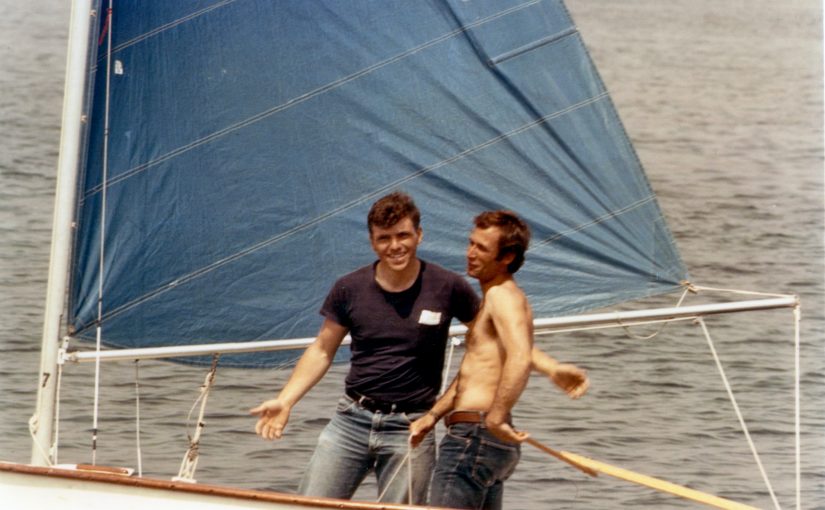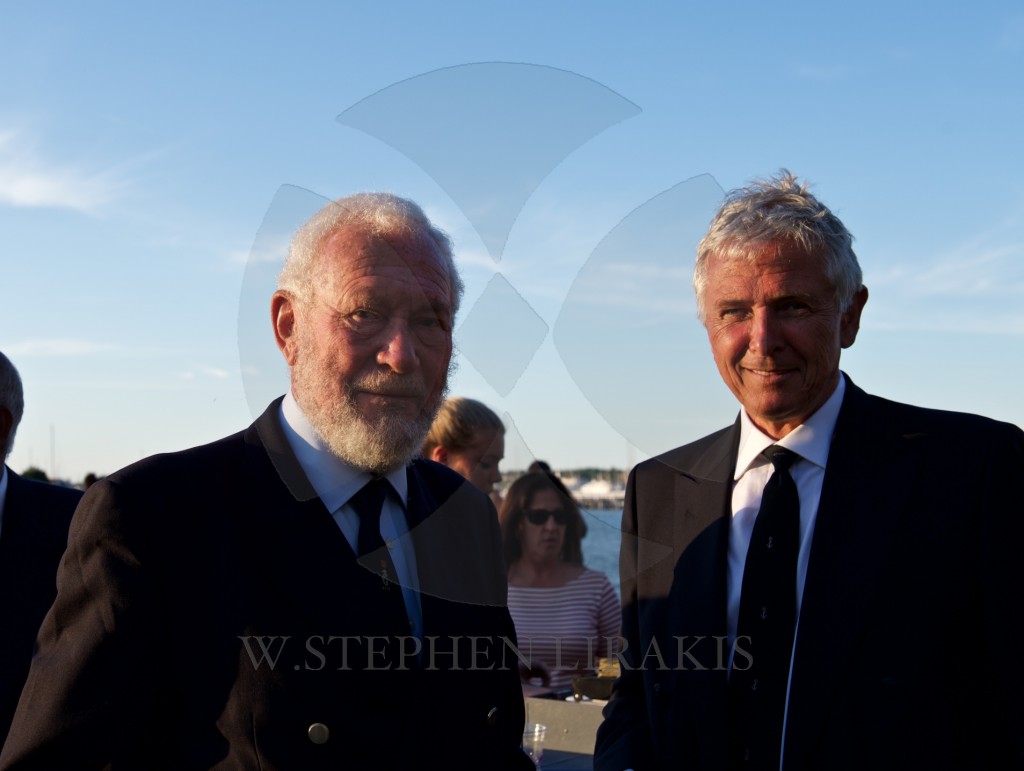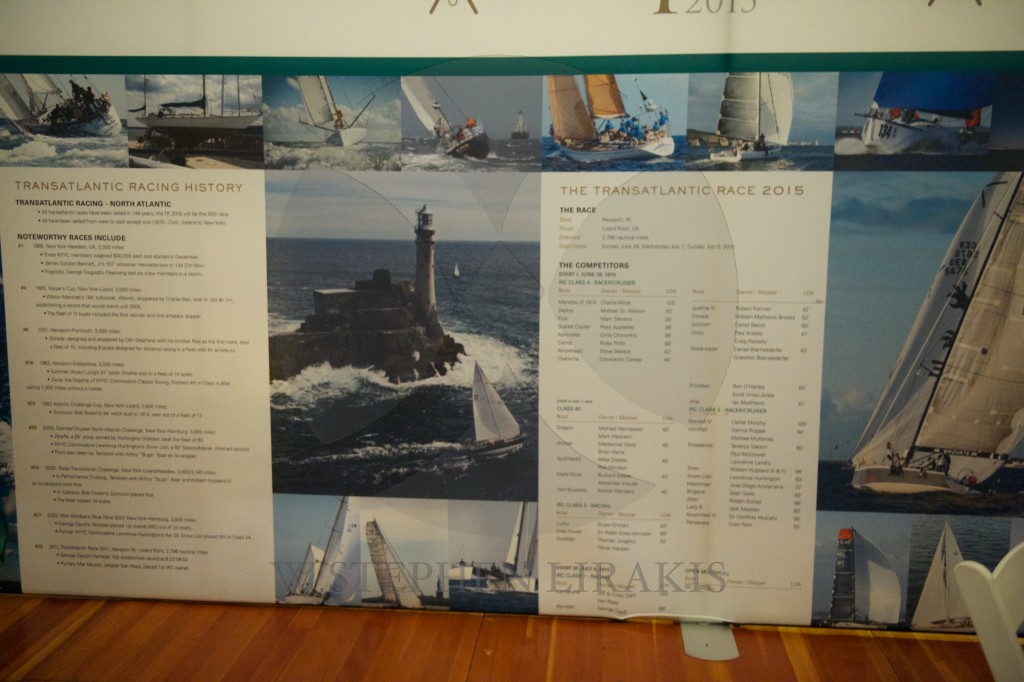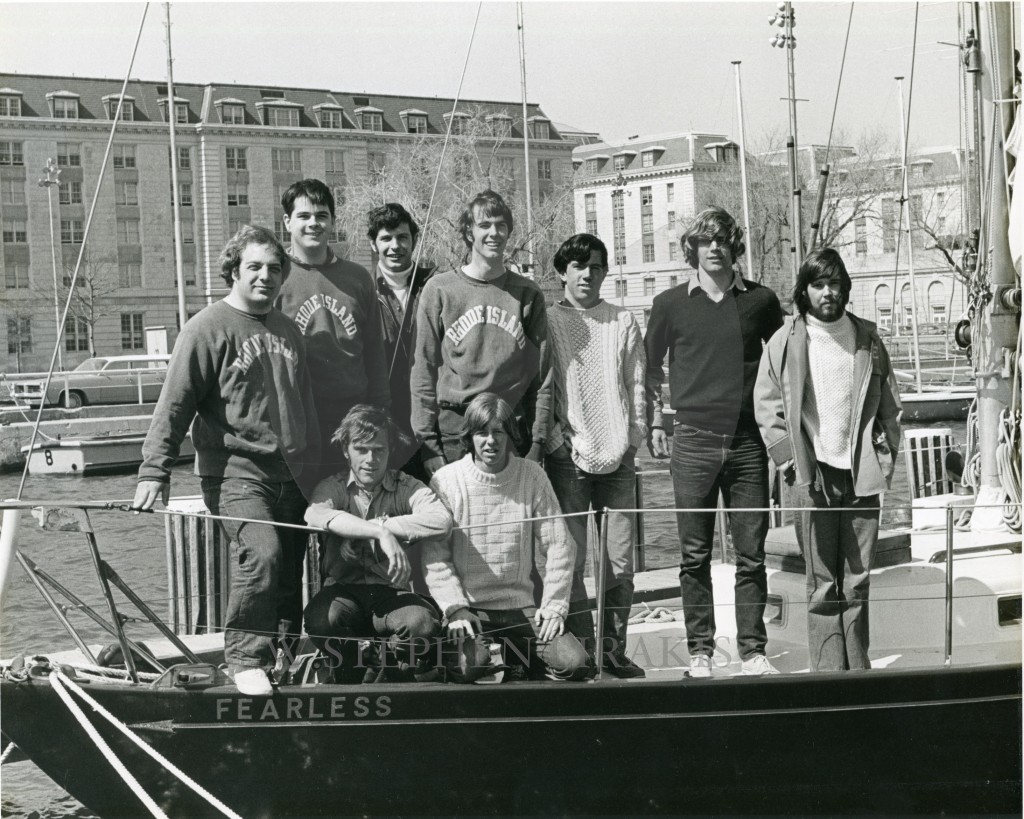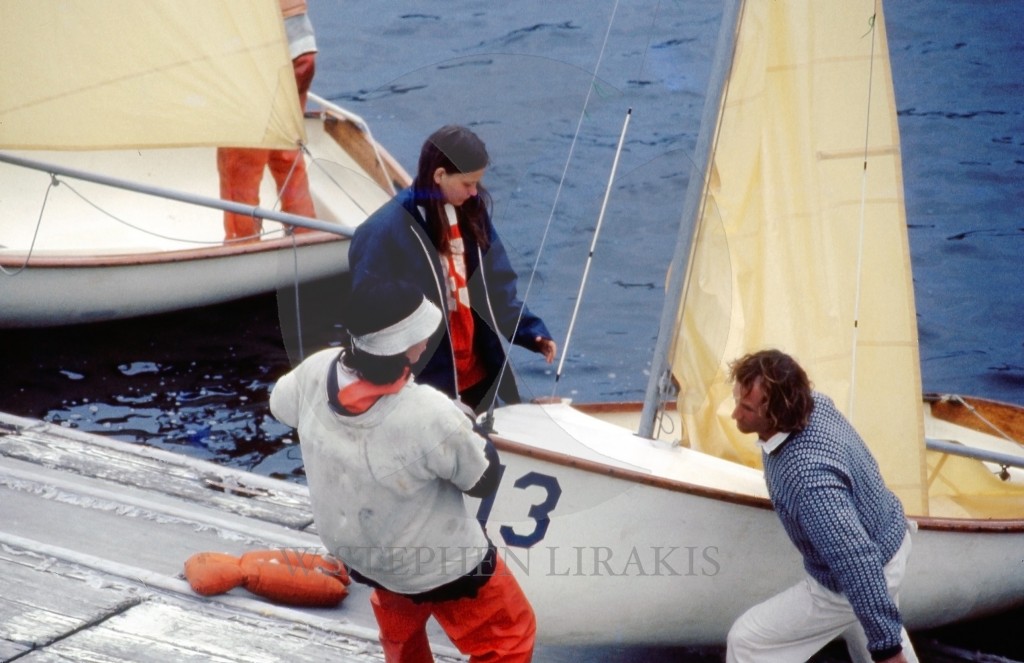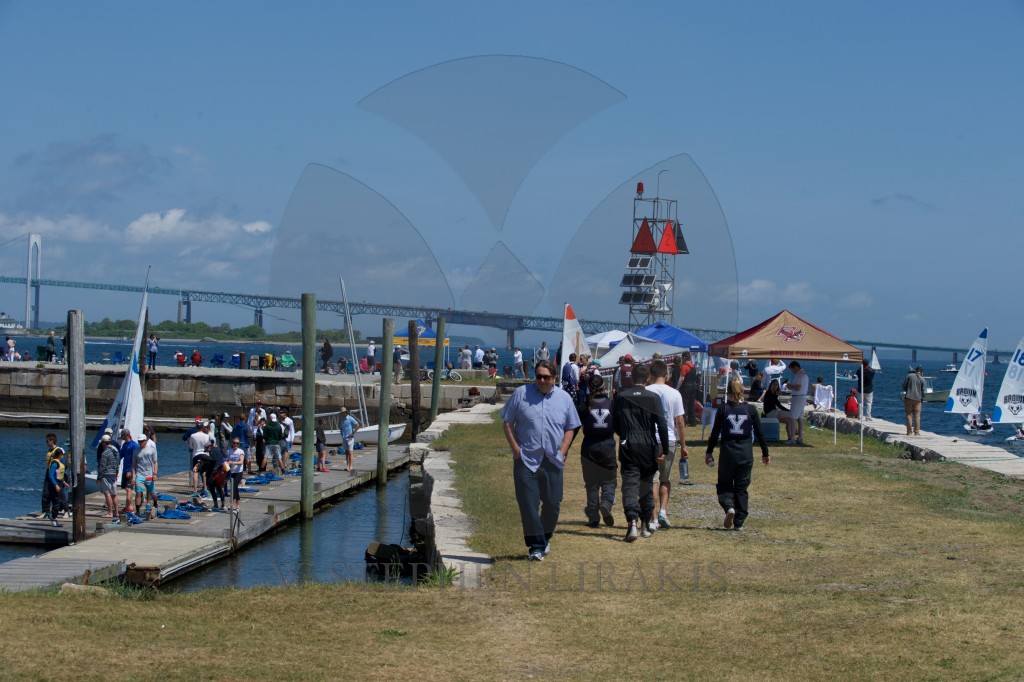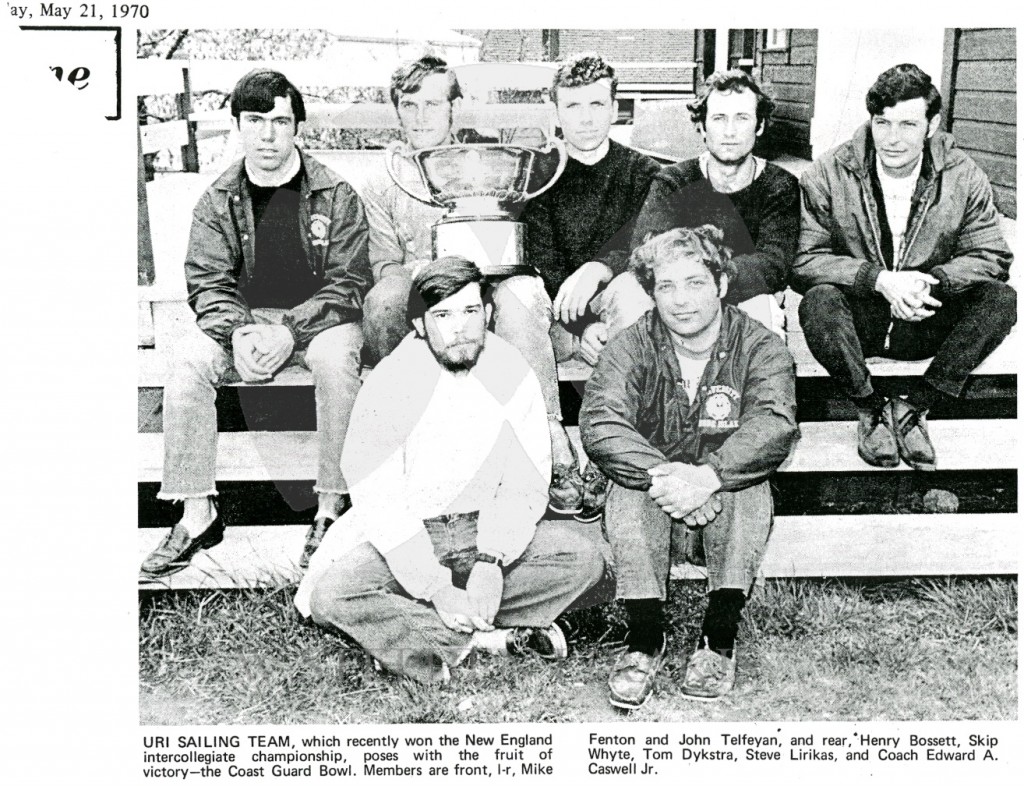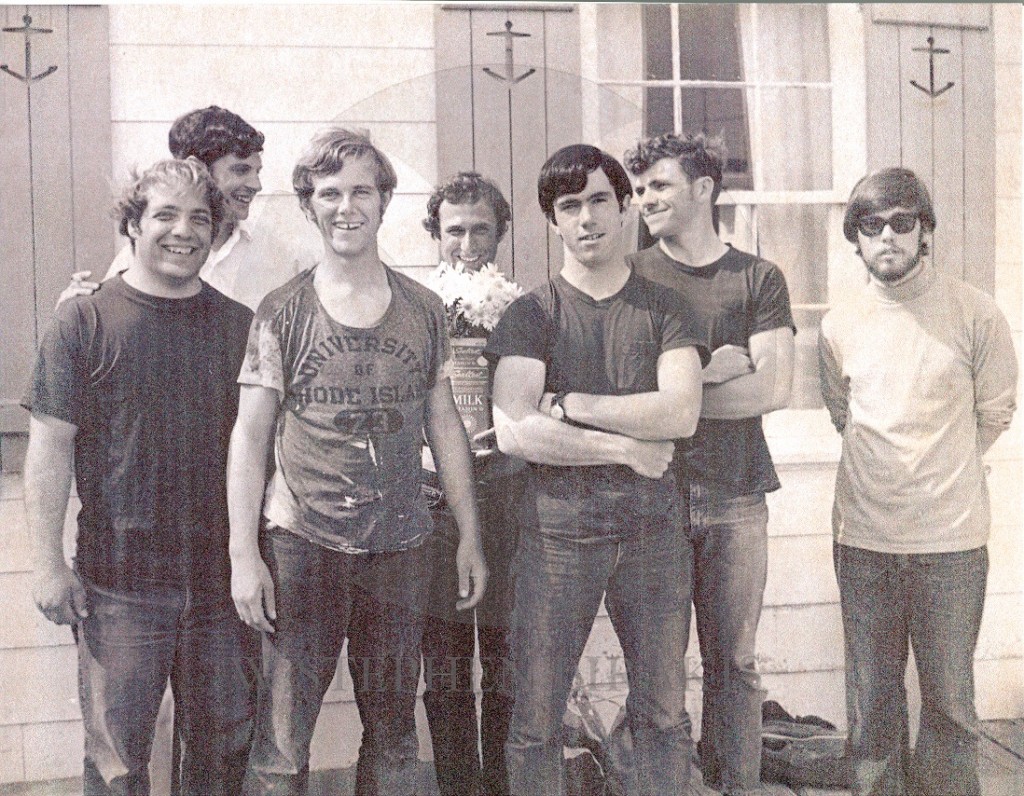This is now a few years old; however the content is ever relevant. We find ourselves in a moment in time which none of us ever imagined. This country of ours is so big and diverse. Each of us having a difficult time understanding how we arrived here.
Category: intercolleigate sailing
THE COLLEGE YEAR: SAILING
My fondest memories of college life are really are those of sailing and the broad community of all the colleges we competed against.
The format that of exciting sailing which afforded the opportunity to develop and sharpen our skills; but I am still racing with or against many of those I knew in college.
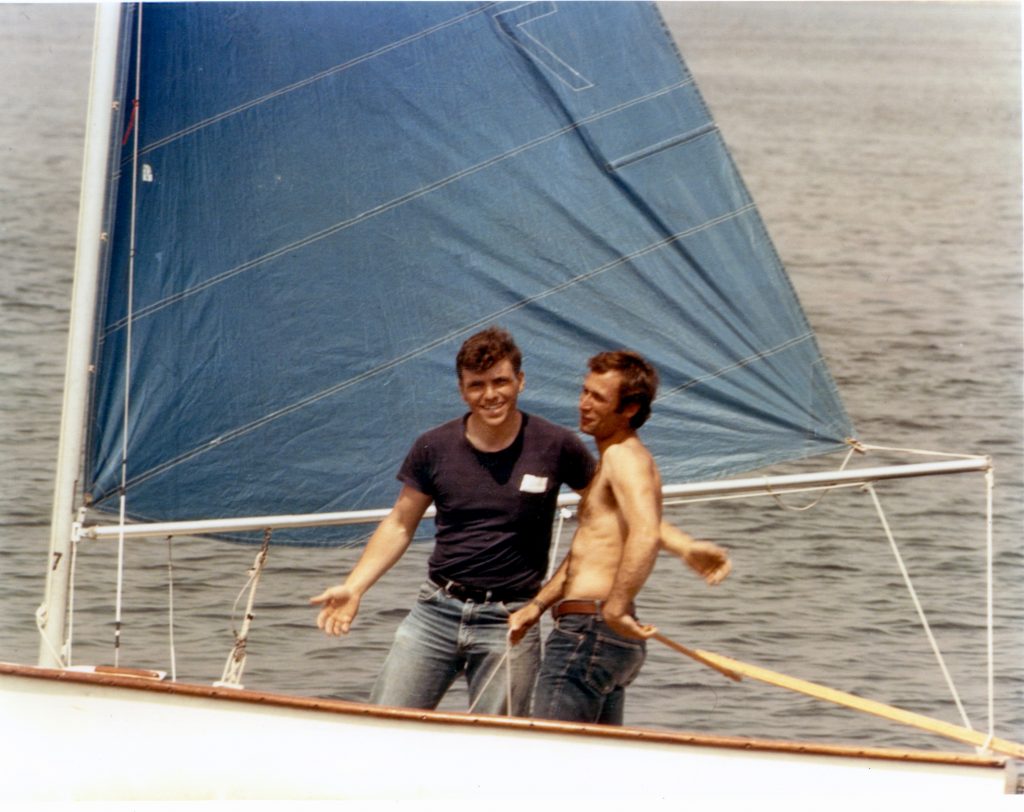
JOE DUPLIN
College sailing remains a fond memory; and Joe Duplin was very much a part of those memories, while he was coach of the Tufts sailing team. Anecdotes of Joe Duplin abound.
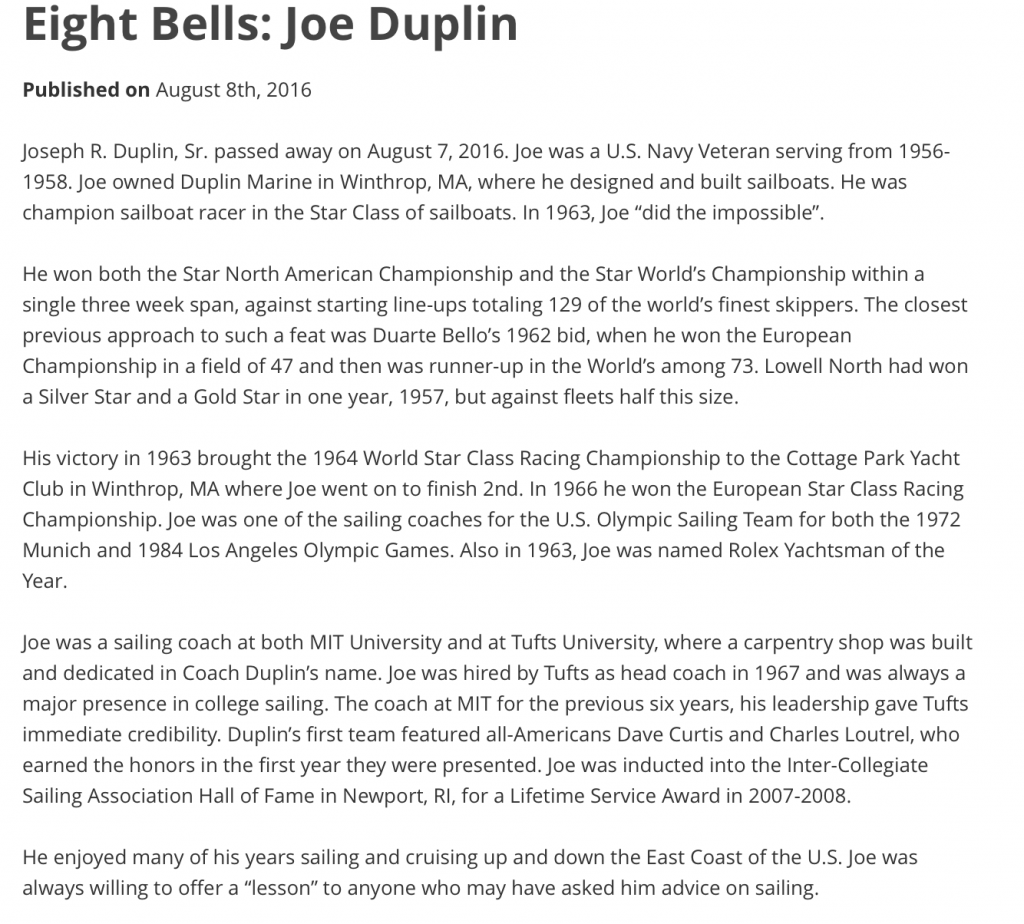
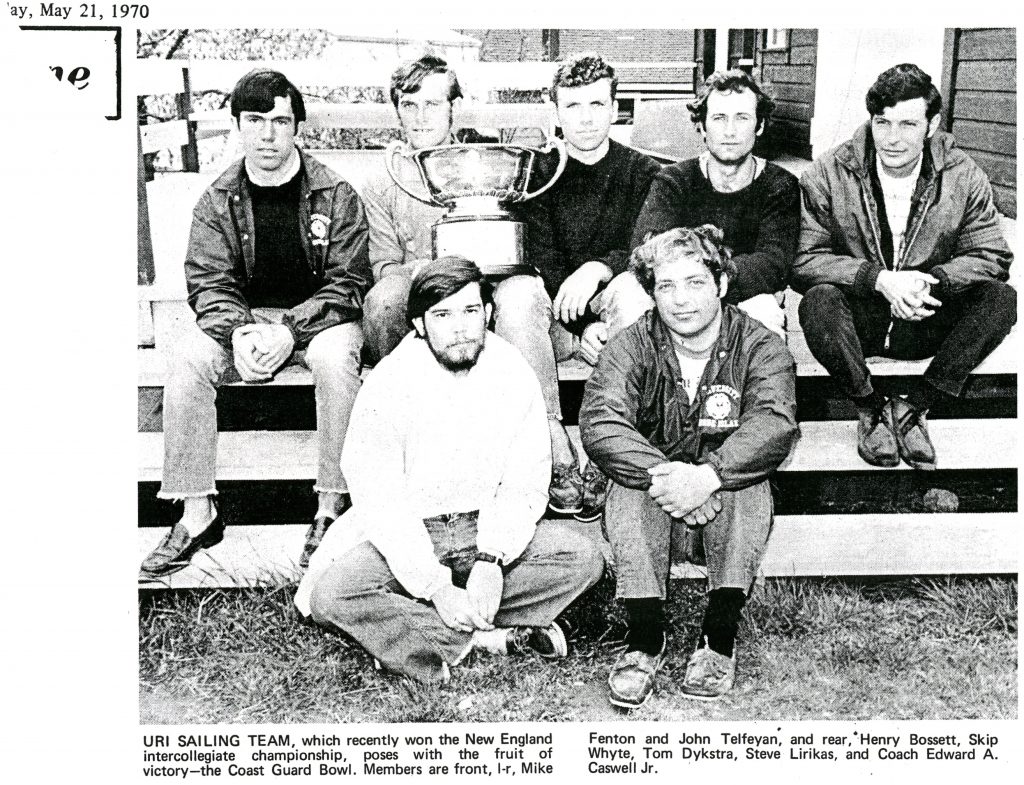

BAND OF BROTHERS
I am about to start my 9th transatlantic race on 7 different boats. I have sailed with a number of people as a result; and have warm memories of each race, each boat, and each and every person.
It is a fraternity that one can only join by competing.
I had news a few days ago that another of that fraternity had died. Peter Van Dyke passed away. A loss to our group.
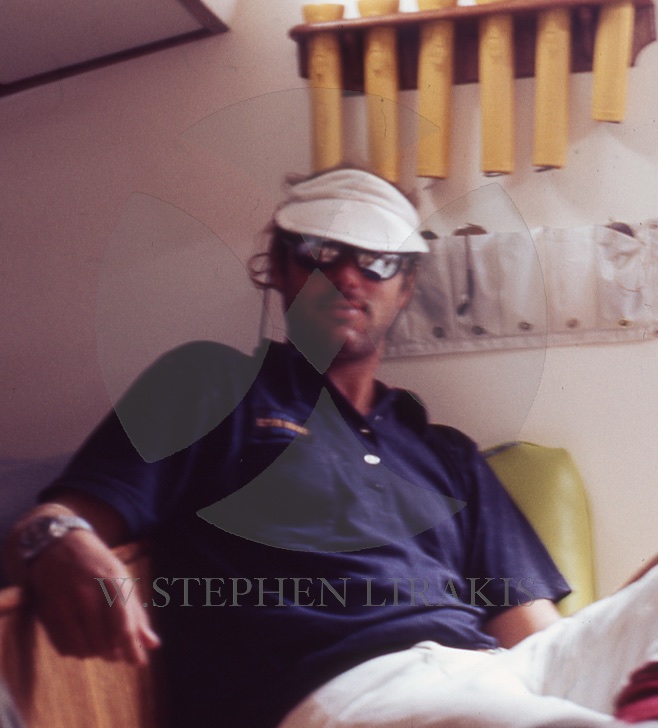
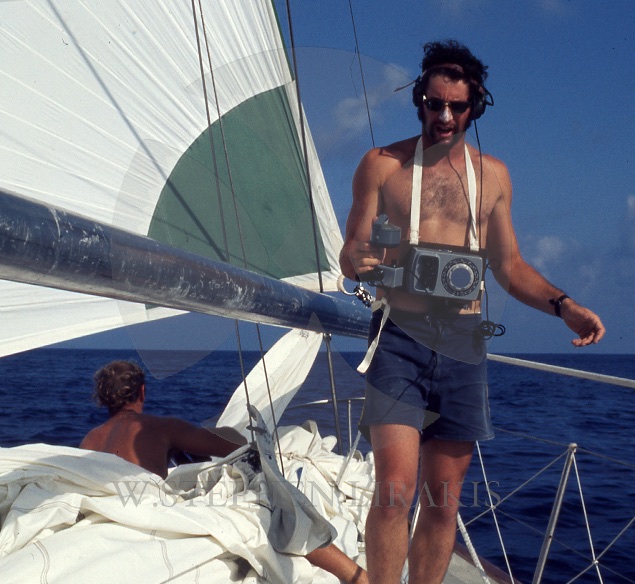
THE WAY WE WERE
I recently attended my 50th class reunion at St. George’s School. Everyone who could came; I think suddenly happy to be able to be seen.
No less, college memories are now distant memories. Blaze Starr was one. We were sailing at the Naval Academy in Annapolis. After dinner we headed for the “Block” in Baltimore. The photo of Blaze is the only proof I have that we were actually there.
Blaze Starr, Burlesque Stripper Linked to a Governor, Dies at 83
By ASHLEY SOUTHALLJUNE 16, 2015
Blaze Starr in New Orleans in 1959. Credit Associated Press
Blaze Starr, the voluptuous stripper who became one of the most famous burlesque performers in America, and whose affair with a Louisiana governor was the basis of a movie, died on Monday at home in Wilsondale, W.Va. She was 83.
She was pronounced dead at a nearby hospital, her nephew, Earsten Spaulding, said. In recent years, she had heart problems and underwent bypass surgeries, he said. She had been in pain on Sunday, he added, but she refused to go to the hospital after she began feeling better.
Ms. Starr, with a head full of red hair, an ample bosom and a penchant for playful humor, stoked the fantasies of her legions of admirers from the runways of burlesque clubs across the country for more than 30 years, seducing many men along the way.
Her most famous affair, with Gov. Earl K. Long of Louisiana, produced a scandal that was the basis for the 1989 film, “Blaze,” starring Paul Newman and Lolita Davidovich. The film was based on her memoir, “Blaze Starr: My Life as Told to Huey Perry,” published in 1974.
One of 11 children, she was born Fannie Belle Fleming on April 10, 1932, in Wilsondale, W.Va. As a child, she worked washing laundry for $1 a day.
In 1947, she traded a life in the coal fields and got on a bus to Washington, D.C., to pursue a career as a country singer. While working at a Mayflower Doughnut Shop, she met a promoter who convinced her to become a stripper instead.
At age 15, Ms. Starr began performing at a club near the Marine Corps base in Quantico, Va., before moving to Baltimore, where in 1950, she stepped onto the runway of the 2 O’Clock Club on the Block, a famous strip of adult entertainment shops and venues.
She gained national recognition in 1954, when she was featured in Esquire magazine, and continued performing for more than 30 years before hanging up her G-string and pasties in the 1980s to become a gemologist. She made jewelry, which she sold at a mall in suburban Baltimore.
Reflecting on her career as a stripper, she told The Baltimore Sun in 2010: “Honey, I loved it. But everything has its season.”
On stage, she often delighted crowds with the way she would tuck a rose between her bosom and blow the petals across her chest. Sometimes, she stretched out on a couch, wiggling and looking seductive while removing her garments. When she got to the last pieces, smoke emerged from between her legs, triggering laughter from the crowd.
She met Governor Long while performing at the Sho-Bar in New Orleans in 1959. She recalled their affair in her memoir, and also claimed to have had an affair with President John F. Kennedy after he attended one of her shows.
In an interview with People Magazine in 1989, she said she had stopped performing burlesque because it had become too raunchy.
Ms. Starr was married to Carroll Glorioso, the owner of the 2 O’Clock Club, for 12 years before they divorced.
Her survivors include five sisters: Betty June Shrader, Debbie Fleming, Berta Gail Browning, Mary Jane Davis and Judy Maynard; one brother, John Fleming; and a host of nieces and nephews.
In a short video profile filmed before the movie was released, Ms. Starr was asked whether she would change anything about her life.
“Not a thing,” she responded. “I would just do a lot more of it and try a lot harder, and seduce a lot more men than I did.”
THE WAY WE WERE, COLLEGE SAILING
Salve Regina and Brown University are hosting the intercollegiate sailing championships over almost three weeks. The women’s championships just finished. the Team racing has just started. I have always had a soft spot for team racing. College sailing remains one of my fondest memories.
I am struck by the contrast in outfits worn by the teams; demonstrated by the photos. I was surprised by the amount of gear for sail at the event. We had neither the money nor the inclination to dress alike.
AN UPDATE ON THE RESCUE OF LOUIS JORDAN
I, like many people were skeptical of the story as first reported. there may be still more to come. Here are some corrections to the original story.
Louis Jordan — Drifting Sailor Update : Media Misreports Story, Now Reports that Skeptics Doubt Sailor
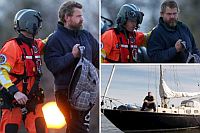 This would be funny, if it weren’t sad. Last week the German container ship, Houston Express, picked up Louis Jordan, who had been drifting off Cape Hatteras for a reported 66 days in his dis-masted Alberg 35 sailboat, Angel. The media managed to completely garble the story, to the extent that anyone who took the reporting at face value might not believe what they were reading. Some have suggested that Jordan lied about the whole affair. Last Friday we attempted the untangle the various accounts. See our post: Louis Jordan, Sixty Six Days Adrift — What Really Happened?
This would be funny, if it weren’t sad. Last week the German container ship, Houston Express, picked up Louis Jordan, who had been drifting off Cape Hatteras for a reported 66 days in his dis-masted Alberg 35 sailboat, Angel. The media managed to completely garble the story, to the extent that anyone who took the reporting at face value might not believe what they were reading. Some have suggested that Jordan lied about the whole affair. Last Friday we attempted the untangle the various accounts. See our post: Louis Jordan, Sixty Six Days Adrift — What Really Happened?
Here is where it gets at least slightly funny. This morning the Washington Post published an article with the headline: Why skeptics think a South Carolina sailor lied about being lost at sea for 66 days. The short answer about why anyone might think such a thing could be that they read nonsense in the Washington Post. (To be fair, many, many other news sources didn’t do any better.)
Even three days after the initial reports came in, the Washington Post is still reporting the same false information. In this morning’s article they reported:
Jordan’s saga began Jan. 23, when he set sail from the marina in Conway, S.C., on a short fishing trip. He was reported missing six days later. A German tanker spotted him sitting atop his 35-foot-boat’s overturned hull 200 miles off the North Carolina coast on Thursday, a full 66 days after his disappearance.
There are several things wrong with these statements. First, even though some reporters think all ships are “tankers,” Jordan was picked up by a container ship. This is not an important point, but it does suggest that the writer is either uninformed or sloppy.
The larger point is the claim that Jordan was “spotted … sitting atop his 35-foot-boat’s overturned hull.” The statement is simply wrong. Both the ship’s captain and representatives of the Coast Guard say that the boat was floating upright when found. Beyond that, the claim itself is also impossible.
Jordan’s boat, Angel, was an Alberg 35, a fiberglass cruising sailboat built in the 1960s. It has 5300 lbs. of ballast, a heavy weight in the keel to help keep the boat upright. In fact, over 40% of the entire weight of the boat is ballast. If an Alberg 35 is rolled over, one of two things can happen. If the hatches are open, it can fill with water and sink. If the hatches are closed and the boat doesn’t fill with water, it will right itself. It will roll back up. The boat cannot float upside down. The 5,300 lbs. of ballast in the very bottom of the boat prevents that from happening. So, it was absolutely impossible that Jordan was found “sitting atop his 35-foot-boat’s overturned hull,” as reported by many sources, including the Washington Post. The New York Times version was even more dramatic. They report that Jordan was “clinging to the hull of his overturned sailboat, surviving on raw fish and rainwater.”
Where did this story come from? It appears that a Coast Guard rescue technician, Petty Officer Kyle McCollum, who helped retrieve Jordan the container ship may have misunderstood what he was told by the Germans on the ship. The Coast Guard did not rescue Jordan from his boat. They only picked him off the deck of container ship. It is unclear whether or not the Coast Guard ever saw Jordan’s boat.
Jordan never said that he was “clinging to the hull of his overturned sailboat.” He says that when the boat capsized, he was sleeping below deck. When the boat righted itself, he had to bail out water that had made its way below.
Likewise the captain of the container ship Houston Express, Thomas Grenz, reports that the boat was floating upright when found. The same was said by Coast Guard spokesperson Lt. Krystyn Pecora.
The Washington Post goes on to write:
Even stranger, doubters pointed out, was his skin, which looked pale and unblemished, with only the slightest hint of sunburn, according to the Daily Mail.
“We were expecting worse with blisters and severe sunburn and dehydration,” Petty Officer 3rd Class Kyle McCollum, who had the first contact with the sailor, told the AP.
Once again, it appears that the petty officer’s misunderstanding of the situation was taken at face value. If he believed that Jordan had been “clinging to the hull of his overturned sailboat, surviving on raw fish and rainwater,” then his expectations made sense. As his assumptions were wrong, so were his expectations.
It is also worth noting that Jordan lived on the sailboat before making his ill-advised advised winter fishing trip. The boat was literally his home. As such, it is likely to have had a certain amount of food and water aboard, as well as clothes, tools and other equipment. Jordan was not sitting exposed to the sun and wind for 66 days. He had the shelter of the cabin and at least some some supplies. When his food and water ran low he caught fish and rain water to sustain him. This is not to say that Jordan had it easy. Depending on which news source you read, Jordan lost between 50 and 90 pounds during the 66 day ordeal.
That Jordan had some supplies and shelter was confirmed by the Coast Guard’s Lt. Pecora, who said that he survived eating the food he had on his boat, by collecting rain water and using a net to catch fish. She said Jordan managed to stay hydrated by going inside his boat’s cabin a lot. A report by the LA Times mentions Jordan cooking pancakes on a propane stove.
The Washington Post also questioned Jordan’s injuries. They quoted Erik Kulik of the True North Wilderness Survival School : “He says he broke his right shoulder, and yet he didn’t even seem to be guarding that shoulder in the pictures I saw after the rescue. There is a lot that doesn’t add up.”
Jordan said that he broke his right shoulder, then later corrected himself and said he broke his collar bone. (In an online video, he shows the mark from the break which is on his collarbone near his right shoulder.) A collarbone fracture typically takes two to four weeks to heal. Jordan was missing for 9 weeks so it is not surprising that he had regained mobility in his right arm and shoulder.
There are many questions to be answered about what happened to Louis Jordan. His decision to go fishing in the Gulf Stream in the winter despite hearing the prediction on oncoming storms, suggests that he is “an inexperienced sailor,” as even he describes himself. Reckless and foolhardy are other adjectives which also come to mind. Nevertheless, so far we have seen no evidence that he is a liar.
On the other hand, the reporting on Louis Jordan by the Washington Post, the New York Times, the Guardian, the Daily Mail and seemingly countless others has been a bad joke.
COAST GUARD RESCUE
Anyone who has been watching the weather knows that February has been an “Epic” month in the Northeast. The loss of the “Bounty” comes to mind; where the skipper thought he could outrun a hurricane in a boat capable of 6 knots in the best of conditions.
The first question is perhaps: who would leave given the weather forecast? The same question for the “Bounty”.

